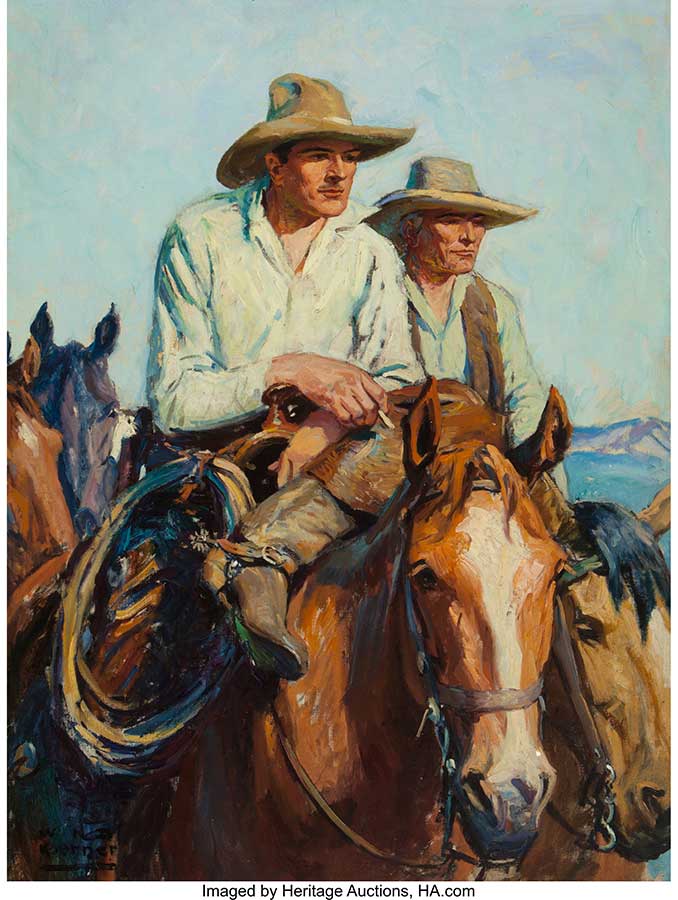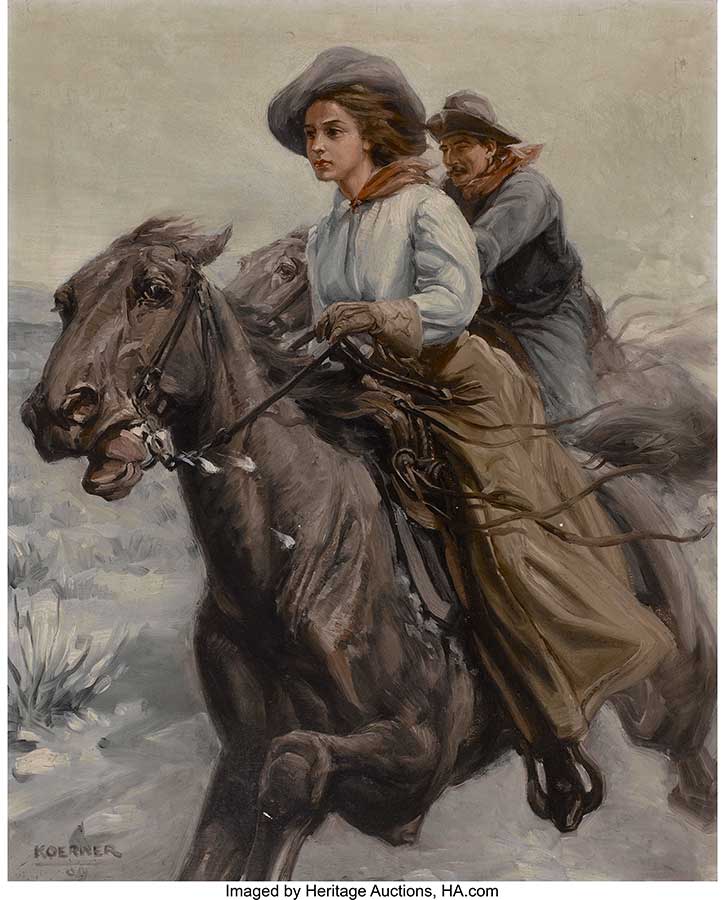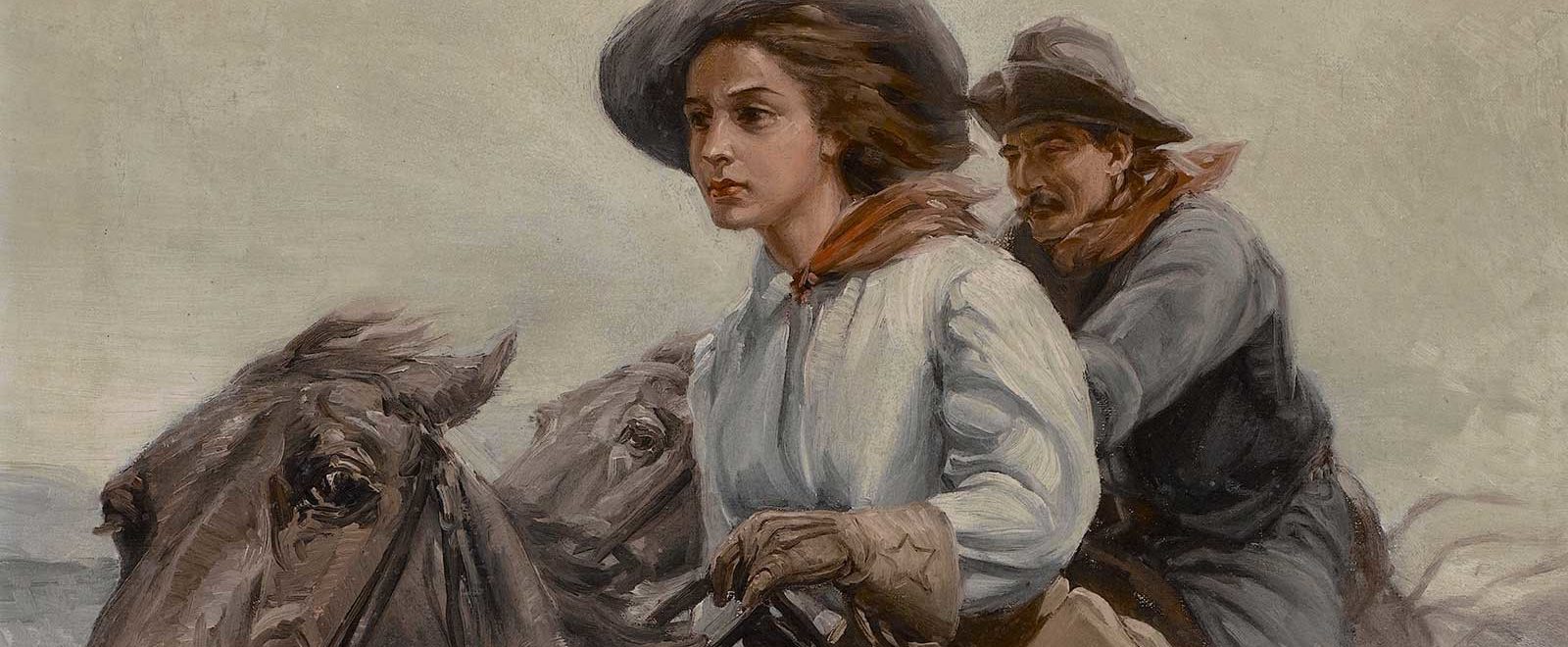THE CELEBRATED ILLUSTRATOR CREATED ENDURING SCENES OF THE AMERICAN WEST
Enlarge

1. William Henry Dethlef Koerner’s career had humble beginnings
His first job in art entailed painting cows on milk wagons in Clinton, Iowa, the rural town his German parents immigrated to when Koerner was 3 years old. When he was 20, he moved to Chicago and landed a job as a staff artist at the Chicago Tribune. Koerner later relocated to New York and other East Coast locales, where he continued his illustration work and art education, before finally settling in Interlaken, N.J.
2. He studied under Howard Pyle, “The Father of American Illustration”
While attending Pyle’s illustration school in Wilmington, Del., Koerner was greatly influenced by the master illustrator, as well as by his fellow students, a roster that included the likes of N.C. Wyeth, Harvey Dunn and Frank Schoonover.
3. Koerner’s fascination with the American West began with an assignment for The Saturday Evening Post
His first illustration for the magazine – Riding the Range, 1909 – accompanied a story about a cowboy hired to remove a homesteader from a large ranch’s unknown range. (Spoiler alert: The cowboy succumbs to the blandishments of the homesteader’s daughter instead.) The assignment was the beginning of a long and productive partnership with the Post.
4. To find inspiration for his Western-themed works, Koerner often visited the area on research trips
Traveling to places such as Wyoming, Montana and California greatly enhanced Koerner’s paintings and illustrations. In addition to making sketches and photographs of the scenery, he would often collect Western artifacts.
Enlarge

5. One of his paintings once hung in the Oval Office
Koerner’s A Charge to Keep was one of President George W. Bush’s favorite paintings. Bush was such a fan, in fact, that he brought the artwork with him to the White House and used it on the back cover of his 1999 memoir, also titled A Charge to Keep. An illustration based on the painting, which depicts horsemen charging up a rugged trail, first appeared in a 1916 edition of The Saturday Evening Post.
Enlarge

6. Koerner created what some consider the first superhero comic
His weekly comic strip Hugo Hercules began its four-month run in the Chicago Tribune in September 1902. Though the strip was unsuccessful, its main character – a kindhearted gent who used his superhuman strength to help people out of jams – is considered by some to be the world’s first superhero.
7. He was incredibly prolific
By the time of his death, in 1938, Koerner had created more than 2,000 illustrations that were published in a variety of popular magazines, most notably The Saturday Evening Post. He also illustrated a number of books by Western writers such as Zane Grey and Eugene Manlove Rhodes.
Heritage Auctions’ Feb. 25 Art of the West Showcase Auction features two works by Koerner: Let’s Drop Over to the Office (estimate: $10,000-$15,000), an oil-on-canvas that later appeared as an interior illustration in a 1926 edition of The Saturday Evening Post, and another oil-on-canvas titled When Tempers Grow Raw (estimate: $4,000-$6,000).
► EVENT
ART OF THE WEST SHOWCASE AUCTION 17172
Feb. 25, 2022
Online: HA.com/17172a
INQUIRIES
Alissa Ford
415.548.5920
AlissaF@HA.com

